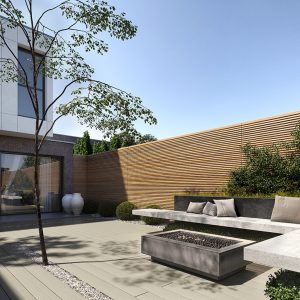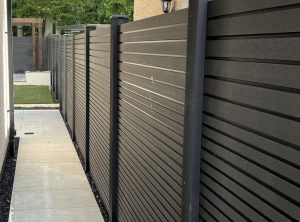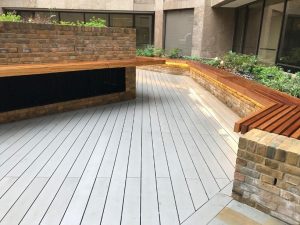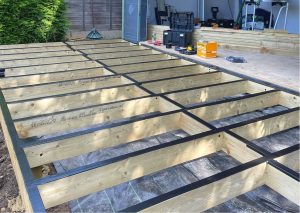In this article, we’re diving deep into the realm of decking, a crucial aspect of outdoor living spaces. Our focus will be on two prevalent methods that have transformed how we approach outdoor deck design and installation: Decking Pedestals and Traditional Raised Decking. As we explore these methods, we’ll particularly highlight their application in the world of composite decking, a material that has gained significant popularity for its durability and aesthetic appeal.
Decking Pedestals and Traditional Raised Decking each offer unique advantages and have distinct installation processes, making them suitable for different types of outdoor environments and design preferences. Whether you’re a homeowner looking to revamp your garden or a professional seeking the most effective decking solutions, understanding these methods is key.
We’ll delve into what each decking method entails, their benefits in the context of composite decking, and how they stack up against each other in terms of functionality, aesthetics, and overall value.
Join us as we navigate through the intricacies of Decking Pedestals and Traditional Raised Decking, uncovering the potential of each method to enhance your outdoor living experience with composite decking.

What are Decking Pedestals?
Decking pedestals are innovative solutions used to support and level raised decks. They are adjustable units that are placed under the joists of the decking to elevate it off the ground, providing a stable and level foundation. Decking pedestals are particularly useful in uneven terrain where traditional methods may be challenging to implement.
How Decking Pedestals Work
Decking pedestals work by providing an adjustable platform for decking joists to be placed on top. The height of each pedestal can be adjusted to ensure a level surface, regardless of the underlying terrain.
Advantages of Using Decking Pedestals
Decking pedestals offer several advantages when supporting a substructure. They are easy to install, require minimal groundwork, and can be adjusted to accommodate uneven surfaces. Additionally, they allow for easy access to the area beneath the deck for maintenance and are an excellent solution for rooftop decks where weight distribution is a concern.
What is Traditional Raised Decking?
Traditional raised decking, as the name suggests, is a conventional method of building decks. It involves constructing a sub-frame on top of concrete foundations or posts buried in the ground, onto which the decking boards are then fixed.
How Traditional Raised Decking is Installed
The installation of traditional raised decking involves several steps. First, the area is prepared and levelled, and then the foundations or posts are set in place. Next, the sub-frame is built on top of these supports, followed by the fixing of the decking boards onto the frame.
Advantages of Using Traditional Raised Decking
Traditional raised decking is a tried and tested method that provides a sturdy and durable deck. It allows for a high degree of customisation in terms of size, shape, and height of the deck. It is also a preferred method for large decks or when the deck needs to be attached to an existing structure.

Comparison of Decking Pedestals and Traditional Raised Decking
When comparing decking pedestals and traditional raised decking, several factors come into play.
Comparison of the Installation Process
Decking pedestals offer a quicker and easier installation process, especially on uneven terrain. Traditional raised decking, while more labour-intensive, allows for greater customisation and can be a better choice for larger decks.
Comparison of Cost
The cost can vary depending on the specific project. However, decking pedestals can often be a more cost-effective solution due to the reduced groundwork and labour involved.
Comparison of Durability and Maintenance
Both methods provide durable solutions, but the ease of maintenance can be a deciding factor. Decking pedestals allow easy access to the area beneath the deck, making maintenance tasks simpler.
Choosing Between Decking Pedestals and Traditional Raised Decking
When deciding between decking pedestals and traditional raised decking, several factors should be taken into account.
Consideration of Cost
The cost of your decking project will depend on various factors, including the size of the deck, the materials used, and the complexity of the installation. Decking pedestals can often be more cost-effective due to the reduced groundwork and labour involved, but this may vary depending on the specifics of your project.
Consideration of Installation Process
The installation process is a vital aspect to consider. Decking pedestals shine in this area, offering a swift and straightforward installation process. They are particularly advantageous on uneven terrain, where they can easily adapt to the landscape. While traditional raised decking can be more labour-intensive and may offer more customisation options, it’s worth noting that decking pedestals can also accommodate larger decks and can be used in conjunction with existing structures. The ease and flexibility of installing decking pedestals make them a highly attractive option.
Consideration of Durability and Maintenance
Both methods provide durable solutions, but the ease of maintenance can be a deciding factor. Decking pedestals allow easy access to the area beneath the deck, making maintenance tasks simpler. Traditional raised decking, while sturdy and durable, may require more effort to maintain, especially if the deck is high off the ground.
Conclusion
In conclusion, the choice between decking pedestals and traditional raised decking will depend on the specific requirements of your decking project. Factors such as cost, installation process, durability, and maintenance should all be considered. By looking at case studies and reviews, you can gain a better understanding of how each method might work for your project. Ultimately, the decision should be based on which method best meets your needs and preferences.
Explore our range of decking pedestals at Ecoscape, designed with adjustable heights up to 1500mm to cater to your specific needs. We provide two distinct styles of pedestals – the Queen and the King. Each style has its own unique advantages, and the choice between the two would depend on your specific application. If you require any guidance on which pedestal would best suit your needs, our dedicated team is always ready to assist. Don’t hesitate to reach out to us for expert advice.














